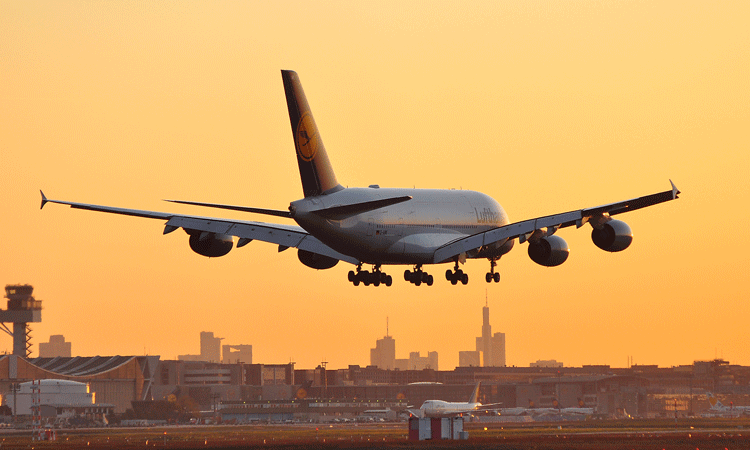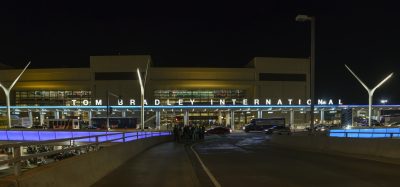Europe’s airport leaders gather as challenges beset a disrupted industry
- Like
- Digg
- Del
- Tumblr
- VKontakte
- Buffer
- Love This
- Odnoklassniki
- Meneame
- Blogger
- Amazon
- Yahoo Mail
- Gmail
- AOL
- Newsvine
- HackerNews
- Evernote
- MySpace
- Mail.ru
- Viadeo
- Line
- Comments
- Yummly
- SMS
- Viber
- Telegram
- Subscribe
- Skype
- Facebook Messenger
- Kakao
- LiveJournal
- Yammer
- Edgar
- Fintel
- Mix
- Instapaper
- Copy Link
Posted: 30 March 2022 | International Airport Review | No comments yet
Europe’s regional airports, industry leads, and business partners have gathered in Palermo Airport for the 13th Annual Airports Council International Europe Regional Airports conference.


For the first time since the COVID-19 pandemic hit, Europe’s regional airports and their business partners have gathered in Palermo Airport (PMO), Italy for the 13th Annual Airports Council International Europe (ACI EUROPE) Regional Airports Conference and Exhibition, hosted by GESAP (Palermo Airport Company).
The event provides the opportunity to review trading conditions against the background of a much more controlled but still unsettled epidemiological situation and the sudden uncertainties triggered by the invasion of Ukraine by Russia.
In this context, ACI EUROPE and its members were honoured to receive as a keynote speaker Dr Vyacheslav Cheglatonyev, Chief Commercial Officer, Odesa International Airport – who presented both in a personal capacity and on behalf of the entire Ukrainian airport community.
The conference discussion focuses on addressing the increasing challenges faced by regional airports in restoring air connectivity and safeguarding territorial cohesion and social inclusion for their communities.
Traffic downfall and mixed recovery prospects
Over the past two years (2020 and 2021), Europe’s regional airports have lost 821 million passengers, the equivalent of three times the traffic growth they had achieved over the 10 years preceding the pandemic.
Since last summer (2021), the pace of their recovery has generally been more dynamic than for larger airports and hubs, thanks to domestic travel remaining largely unrestricted and the quicker progress made in easing restrictions on intra-European and in particular intra-EU travel. This has remained the case over January and February 2022, despite the downward impact of the Omicron variant. Accordingly, smaller regional airports recovered 64 per cent of their pre-pandemic (2019) passenger volumes over that period, while the permanence of travel restrictions on many intercontinental markets, in particular Asia, resulted in the largest airports and hubs achieving a recovery of just 53 per cent.
Olivier Jankovec, Director General of ACI EUROPE said: “Overall and based on current airlines’ plans for the summer season, recovery prospects remain pretty good for most of Europe’s regional airports. They could see the capacity deployed by airlines finally exceeding pre-pandemic levels between +1.2 per cent to +2.2 per cent – whereas larger airports will see airline capacity remaining well below such levels. However, these averages mask considerable variations, with regional airports serving popular tourism destinations and located on islands benefitting the most from a recovery fuelled by leisure and VFR demand.”
Summer season flight schedules reaching such high levels also point to the challenge of seasonality. Many airports need to staff year-round to serve weekly and seasonal peaks whereas yearly passenger volumes are still well below pre-pandemic levels. This in the context of systemic staff shortages within the air transport ecosystem which are taking their toll on airport capacity, on-time performance and quality.
Downside traffic risks from the war in Ukraine
At the same time, Jankovec warned about heightened downside traffic risks resulting from the war in Ukraine: “In addition to the collapse of passenger traffic at Ukrainian airports and the loss of most international passenger traffic at Russian airports, for some other airports these risks are immediate. This is the case for those in the vicinity of Russia and Ukraine, or which are generally reliant upon inbound traffic from these countries – such as airports in Cyprus, the Baltics and along the Bulgarian coast.”
“But for most of Europe’s airports, these downside traffic risks remain much less acute for now, as they essentially relate to the inflationary pressures accelerated by the conflict. This is about the extent to which increasing oil and other commodity prices might lead airlines to increase their fares, reduce disposable income for households and affect both consumer and business confidence.”’
Increasing financial challenges and complexity
Besides these uncertainties, challenges are mounting for Europe’s regional airports. Improving traffic should not obscure the fact that, as with the rest of the airport industry, financial weakness remains widespread and structural.
Niall McCarthy, Chair of ACI EUROPE’s Regional Airports Forum and CEO of Cork Airport (ORK) commented: “While the past two years have seen regional airports accumulating historic losses and debt, we are now more squeezed than ever by airlines running beauty contests when deciding where to deploy their aircraft and which routes to operate. Airport competition has reached new levels, yet many regulators are still stuck in the 1980s believing we are able to exercise market power. Competition has never been stronger not just between airports with overlapping catchments, but truly on a Pan-European basis. At the same time, many states keep passing national regulatory and compliance costs onto airports – from health safety to security and border control.”
He pointed to the planned entry into force of the new Schengen Entry Exit System next autumn as the latest case in point: “Besides weak financials, what worries us even more is the potential chaos passengers will have to endure as many states will not be operationally ready to implement this new system. There is no doubt more time will be needed.”
Transitioning to net zero regional air connectivity
Crucially, financial weakness clearly challenges the ability of regional airports to become more sustainable and reduce their CO2 emissions. Their resolve remains unabated, as 146 regional airports across Europe are now certified under Airport Carbon Accreditation (ACA). But there is no escaping the fact that more resources – including public financing and State aid – will be needed to progress further, especially in view of the ambitions of the EU’s FIT FOR 55 package and renewed inflationary pressures.
Jankovec was adamant that current debates on the environmental impact of short-haul flying needed to shift from the punitive and symbolic to rationality and effectiveness: “The last thing our planet needs is climate populism. Yet, this is precisely where we are heading with arbitrary bans on short-haul flights such as the one France is trying to enforce (so far halted by the European Commission). Regional aviation is the test bed for the decarbonisation of the sector, and short-haul routes will be the first ones where new electric or hybrid powered aircraft will be deployed – well before rail development could effectively provide suitable alternatives at scale. Curbing regional air connectivity is a nonsense. It would only hamper cohesion and increase territorial inequality, risking a backlash against the climate agenda.”
New leadership at the helm for regional airports forum
The gathering in Palermo also marked the close of the tenure of Niall McCarthy, CEO of Cork Airport, as Chair of ACI EUROPE Regional Airports Forum, and the confirmation of incoming Chair Marco Pernetta, CEO of Innsbruck Airport (INN), and the appointment of Vice Chair Andrea Andorno, CEO of Torino Airport (TRN).
Related topics
Air traffic control/management (ATC/ATM), Airport crisis management, Airport development, Airside operations, Capacity, COVID-19, Emissions, Passenger experience and seamless travel, Passenger volumes, Sustainability, Sustainable development, Terminal operations
Related airports
Cork Airport (ORK), Innsbruck Airport (INN), Palermo Airport (PMO), Torino Airport (TRN)
Related organisations
Airports Council International Europe (ACI Europe), GESAP (Palermo Airport Company)
Related regions
Related people
Andrea Andorno, Dr Vyacheslav Cheglatonyev, Marco Pernetta, Niall McCarthy, Olivier Jankovec


















